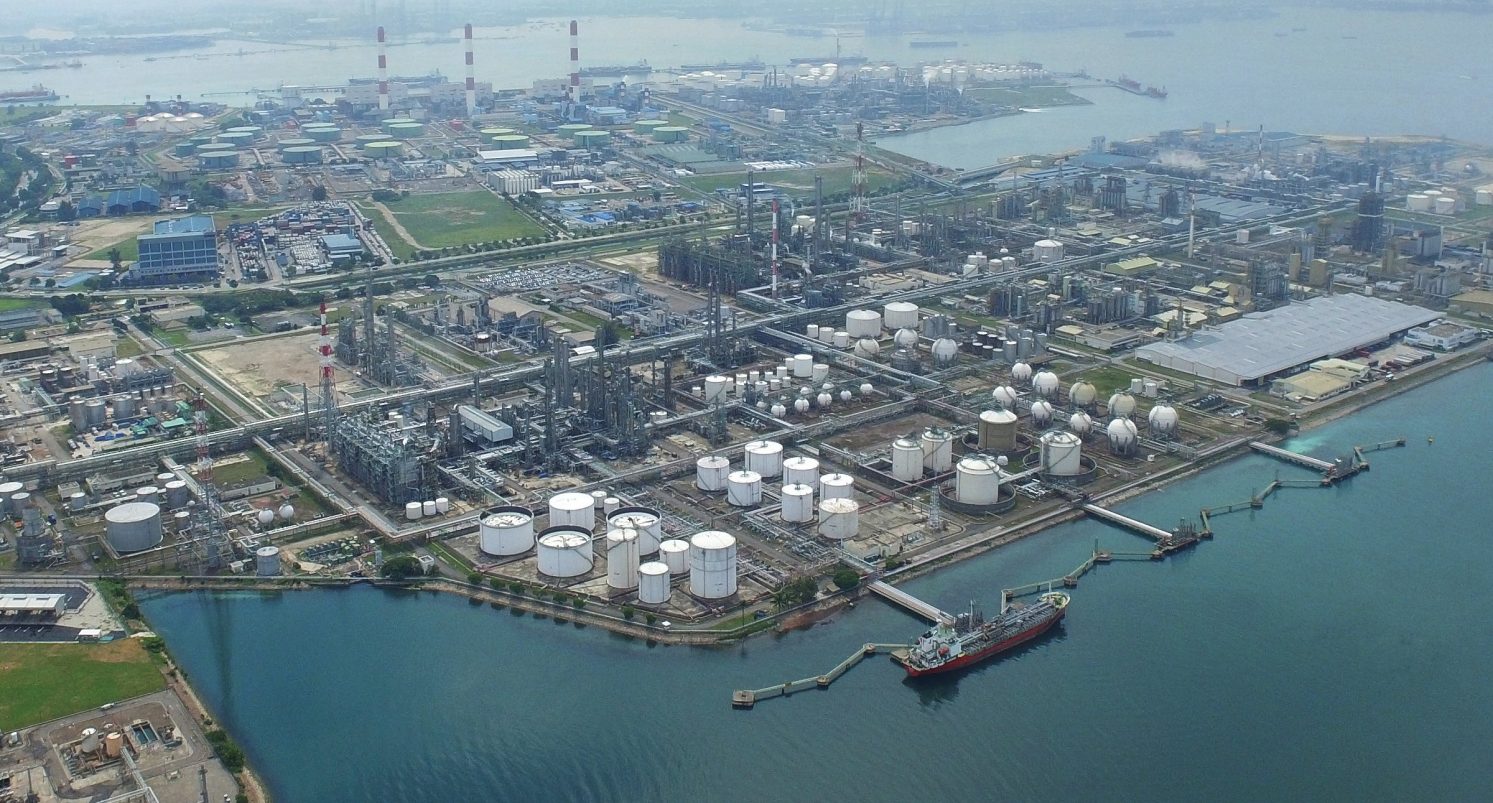
Factum Perspective: Sri Lanka, Singapore, and the politics of oil
By Rathindra Kuruwita

On June 19, Sri Lanka’s Minister of Power and Energy Kanchana Wijesekera informed the media that giving the Ceylon Petroleum Corporation (CPC) a monopoly over the oil industry was a mistake, adding that the government was taking steps to allow multinational oil companies to recommence operations in the country.
The Minister also insisted that many oil companies had shifted to Singapore after Sri Lanka nationalized the petroleum sector. He explained that Singapore had become a petrochemical hub thereafter.
Wijesekera suggested that if we allow companies of oil producing nations to supply and distribute oil in Sri Lanka, we could dethrone Singapore as the petrochemical hub of Asia.
The history of Singapore’s petrochemical industry is more complex than what this reading may suggest. Far from benefitting from the Sirimavo Bandaranaike’s government’s nationalization of multinational companies, it was a combination of pragmatic foreign policies and economic policies which helped Singapore forge ahead.
Singapore strikes black gold
While almost everyone would know that Singapore exports a lot, only a few are aware that Singapore’s second biggest export is refined petroleum.
Singapore is currently one of the biggest players in the petroleum industry and this has helped the country’s rise from poverty to first-world wealth.
How did this happen? In 1960, the year Singapore gained self-rule, the country’s GDP per capita stood at just 1,360 Singaporean Dollars, or 428 US Dollars. Most of that money came from a local British military station.
In 1970 that figure doubled to 2,800 Singaporean Dollars, or 925 US Dollars. Four years later, it doubled again to 5,655 Singaporean Dollars, or 2,341 US Dollars. This growth came on the back of lucrative the refinement of oil products by companies such as Shell, British Petroleum, and Mobil.
Singapore had been a petroleum trading and distribution location long before independence. Oil was one of the Malay archipelago’s most valuable commodities after rubber and tin. In the 1800s, Syme & Company built a small oil refinery on the island of Pulau Bukom, near Singapore, just off the Keppel harbor. Syme would later become a part of Royal Dutch Shell, today the world’s seventh largest company.
However, the big oil companies refrained from building a refinery on Singapore island although Singapore housed sales and fuel distribution centers. The Singaporean government kept on requesting these companies to move in and the companies kept on giving excuses for not doing so.
It must be noted that Lee Kuan Yew and his associates did not sit on excuses about big oil giants, communist insurgents, and trade unions. Given that Western oil giants were not keen on building a refinery in Singapore, the government did the next best thing. It struck a deal with the Japanese.
In September 1960, Minister of Finance Goh Keng Swee established an equal joint venture with Maruzen, a predecessor to the Cosmo Oil Company, Japan’s third biggest refiner. The joint venture was to build a refinery to supply oil products to the Japanese home market.
Royal Dutch Shell quickly responded and struck an SGD30 million deal to build their first refinery. The deal was Singapore’s largest, and the refinery was built just one year after construction began. The deal delayed Shell from completing a previously announced refinery in Port Dickson, Malaysia. The Port Dickson refinery would not go online until 1963, giving the tiny island a lasting head start.
British Petroleum came in in 1962, Mobil in 1966, Shell built another one in 1967, and finally Esso, which went on to become Exxon Mobil, followed suit in 1969.
Singapore had great leaders. But it was also lucky. Singapore’s petrochemical growth was fueled by a succession of global conflicts. Wars in Indochina and the Middle East led to shortages and price shocks. Singapore profited greatly from selling refined oil to the participants of these wars. For instance, a great deal of oil used in the Vietnam War was refined in Singapore.
By 1974, Singapore had five refineries which could produce 1.2 million barrels a day and oil products accounted for nearly 40% of the country’s total exports. It had become East Asia’s main refining center.
Soon, Pertamina, Indonesia’s state-owned energy company, and other companies in the Middle East, began setting up their own refineries. Singapore realized that it needed to diversify expand across the value chain. The natural next step, hence, was to expand into petrochemicals.
Petrochemicals are chemicals made from crude oil and natural gas. They make up about 40% of the entire chemicals market, of the foundation of everyday items like plastic bags, pipes, tubing, bottles, and car tires.
Thus in 1971, the government began reaching out to Japanese multinationals over a possible petrochemical joint venture, to create a strong oil-processing industry.
Breaking into the petrochemical space was not easy. However, the president of Japan’s Sumitomo Chemical Company was an avid admirer of Singapore and the company and Singapore eventually exchanged letters of intent, with the goal of going online by 1979.
The project quickly expanded. In 1976, Sumitomo added 11 other chemical companies to its side of the consortium. The Japanese government then committed 3-billion-yen worth of investments through its Overseas Economic Cooperation Fund.
In 1977, the Petrochemical Corporation of Singapore (PCS) started operations. Its first chairman was J. Y. Pillay, then chairman of the Singapore wealth fund Temasek and a significant contributor to Singapore Airlines. Despite a promising beginning, however, things went awry in the late 1970s with an unprecedented oil crisis. The fall of the Shah and the Iran-Iraq war triggered the crisis even further.
The world economy went into recession, creating an oil glut, and people questioned the wisdom of building a massive petrochemical complex. Analysts predicted annual losses running into hundreds of millions of dollars at the complex.
Nevertheless, the SGD 2 billion complex was finished in 1984. The complex consisted of a naphtha cracker and a few downstream plants on the island of Ayer Merbau.
Lee Kuan Yew pushed to expedite the project. In September 1985, he visited the People’s Republic of China and struck a deal with Deng Xiaoping’s government to sell them Singaporean petrochemicals at a lucrative price. The significance of this move should not be underestimated: having sided with a US-led Cold War front, the Singaporean government was ready and willing to approach the People’s Republic of China to help improve its economic situation.
In 1995, Singapore decided to integrate its refinery and petrochemical industries further, helping its companies save on storage and logistics – a major plus point, since feedstock is the petrochemical industry’s single biggest cost.
The country then embarked on a massive and ambitious land reclamation project linking together seven smaller islands to create one large area of about 2,790 hectares: Jurong Island.
Today, petrochemical companies on Jurong Island benefit from several advantages. They can buy feedstock through pipelines and tap utilities and services from third-party providers. The Singapore government pitched it as a “plug and play” strategy for petrochemicals. The strategy worked. Over a hundred chemical multinationals now work on Jurong Island, including some of the world’s largest like Mitsui, Sumitomo, BASF, and DuPont.
In 2021, Singapore’s total merchandise trade increased by 19.7%, recovering from contractions in 2019 and 2020, while oil trade rose by 43.6%.
An epilogue: Sri Lanka and Singapore
The story goes that Lee Kuan Yew had wanted to model Singapore along the lines of Sri Lanka. Sri Lankans very frequently bring this up. There are many who believe that Singapore gained because we made mistakes, and that if we rectify these mistakes Sri Lanka can surpass Singapore’s achievements.
It is probably based on this belief that Minister Kanchana Wijesekera contended that if we welcome multinationals back, we will eventually dethrone Singapore as a petroleum hub.
The truth, as always, is far more complex. Singapore was dirt poor when it gained independence, but it was run by people like Lee Kuan Yew, Goh Keng Swee, and J. Y. Pillay. These leaders helped Singapore take advantage of its strategic location, first by feeding off American fears of Communist domination of East Asia and later by approaching Communist countries, like China, when the latter were on the rise.
It may be a tragedy for Sri Lanka, and for other countries, that they lack leaders who understand history for what it is and not for what it is imagined to be. Nowhere is this truer than how politicians view the diplomatic strategies that nations held up as models to emulate followed, when they were facing economic crises on their own.
Rathindra Kuruwita is a journalist and a researcher from Colombo, Sri Lanka. He holds a MSc in Strategic Studies from the S. Rajaratnam School of International Studies, NTU, Singapore. He was also a fellow at Daniel K. Inouye Asia-Pacific Center for Security Studies, USA, and a participant of the International Visitor Leadership Program (IVLP) conducted by the U.S. Department of State. He writes on security and international relations to several publications and has written extensively on the Sri Lanka-China relationship.
Factum is an Asia-focused think tank on International Relations, Tech Cooperation and Strategic Communications based in Sri Lanka accessible via www.factum.lk


